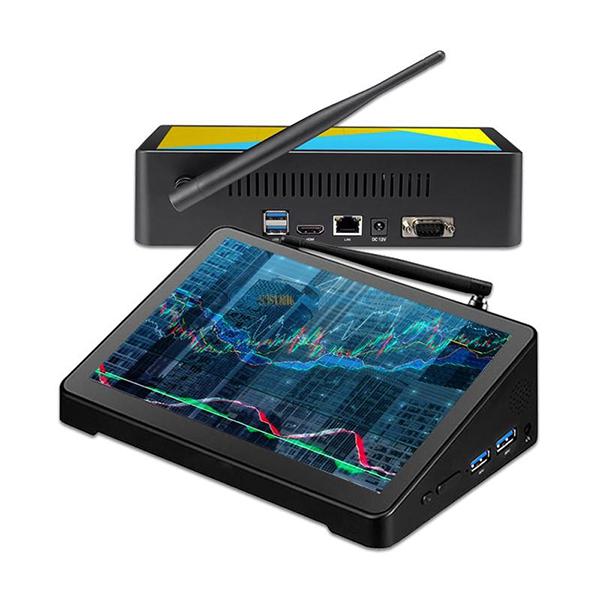Login and usage tips for the remote monitoring system of industrial control computers
Best Practices for Logging In and Using Remote Monitoring Systems on Industrial Control Computers
Remote monitoring systems for industrial control computers (ICCs) enable engineers to oversee operations from anywhere, improving efficiency and reducing on-site visits. However, secure and efficient access requires adherence to specific techniques. Below are actionable tips for logging in and managing remote monitoring interfaces effectively.

Secure Login and Authentication Protocols
Ensuring only authorized users access the system prevents data breaches and operational disruptions.
- Use Multi-Factor Authentication (MFA): Enable MFA through SMS codes, authenticator apps, or hardware tokens. This adds a layer of security beyond passwords, especially for critical systems.
- Implement Role-Based Access Control (RBAC): Assign permissions based on user roles (e.g., operator, technician, administrator). Restrict access to sensitive functions like system reboots or configuration changes.
- Avoid Shared Credentials: Enforce individual accounts for each user. Shared logins make it difficult to trace actions and increase vulnerability to credential leaks.
- Monitor Login Attempts: Review logs for failed login attempts or unusual access times. Block IP addresses with repeated failed attempts to deter brute-force attacks.
Optimizing Remote Connection Performance
Latency and connectivity issues can hinder real-time monitoring. Adjust settings to enhance responsiveness.
- Choose the Right Protocol: Select protocols like RDP (Remote Desktop Protocol) for graphical interfaces or SSH (Secure Shell) for command-line access. For low-bandwidth environments, consider protocols with compression (e.g., VNC over SSH).
- Adjust Display Settings: Reduce screen resolution or color depth in remote sessions to minimize bandwidth usage. Disable visual effects like wallpapers or animations.
- Schedule Data-Intensive Tasks: Perform backups or system updates during off-peak hours to avoid network congestion. Use differential backups to reduce data transfer volumes.
- Leverage Local Caching: Enable caching for frequently accessed data (e.g., sensor logs) to reduce repeated downloads. Clear cache periodically to free storage.
Navigating the Remote Monitoring Interface
Efficient use of the interface reduces errors and improves productivity.
- Customize Dashboards: Arrange widgets to prioritize critical metrics (e.g., temperature, pressure). Use color-coding to highlight abnormal values (e.g., red for out-of-range readings).
- Utilize Keyboard Shortcuts: Learn shortcuts for common actions (e.g.,
Ctrl+Fto search logs,Alt+Tabto switch views). This speeds up navigation during emergencies. - Bookmark Frequent Pages: Save links to frequently used sections (e.g., alarm history, device configuration) for quick access. Organize bookmarks by function (e.g., “Diagnostics,” “Maintenance”).
- Document Workflows: Create step-by-step guides for routine tasks (e.g., restarting a service, acknowledging alarms). Share these with team members to standardize operations.
Troubleshooting Common Remote Access Issues
Resolving problems quickly maintains system availability.
- Check Network Connectivity: Verify the ICC’s internet connection and firewall rules. Ensure ports for remote access (e.g., TCP 3389 for RDP) are open.
- Update Remote Software: Install the latest client and server updates to fix bugs and compatibility issues. Outdated software may cause crashes or security vulnerabilities.
- Resolve Certificate Errors: If encountering SSL/TLS warnings, verify the certificate’s validity. Replace expired or self-signed certificates with trusted ones from a certificate authority.
- Test Alternative Connections: If the primary method fails, try a backup connection (e.g., VPN over 4G/5G). Keep secondary credentials handy for emergencies.
By following these techniques, engineers can log in securely, optimize performance, and navigate remote monitoring systems efficiently. Proactive management of authentication, connectivity, and interface usage ensures reliable access to industrial control computers, even in challenging environments.
Our company was founded in 2015 by a group of enthusiastic industrial hardware professionals who share a common passion for Iron Man Tony Stark. With their extensive theoretical knowledge and industry experience, the company was born out of a desire to create a high-tech product company in the computer hardware field, aiming to become the “Iron Man” of the computer industry. We specialize in OEM/ODM services, providing high-quality industrial computer production and research and development. Our product forms include touch display monitors, touch all-in-one machines, ruggedized tablets, various new-generation advertising machines, and specialized computers for harsh environmental applications. Our goal is to help customers achieve business value through innovative and high-quality products.Official website address:https://www.starktouchdevice.com/